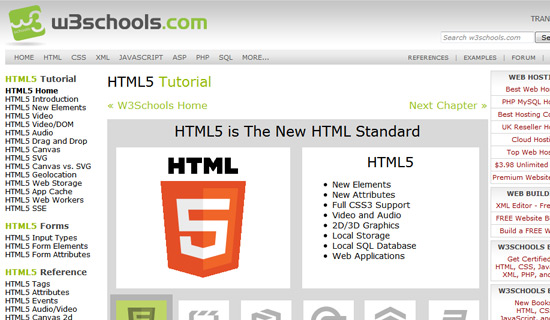An HTML form is used to collect user input. The user input is most often sent to a server for processing.
Example
Try it Yourself »
The <form> Element
The HTML <form> element is used to create an HTML form for user input:
The <form> element is a container for different types of input elements, such as: text fields, checkboxes, radio buttons, submit buttons, etc.
HTML CHEAT SHEET Berners-Lee invented it back in 1991. Today HTML5 is the standard version and it's supported by all modern web browsers. Our HTML cheat sheet gives you a full list of all the HTML elements, including descriptions, code examples and live previews. Simply scroll down to browse all HTML tags alphabetically or browse tags by their. Learning HTML is hard enough, without having to memorize dozens of tags & attributes. That’s why we’ve put together this handy HTML cheat sheet for you to print out & keep by your side as you learn to code HTML, CSS & javascript. It makes the process of. HTML Cheat Sheet – Common Tags www.w3schools.com/tags Tag Description Example html html Required! Makes the document readable by a web.
Slack chime plugin. All the different form elements are covered in this chapter: HTML Form Elements.
The <input> Element
The HTML <input> element is the most used form element.
An <input> element can be displayed in many ways, depending on the type attribute.
Here are some examples:
| Type | Description |
|---|---|
| <input type='text'> | Displays a single-line text input field |
| <input type='radio'> | Displays a radio button (for selecting one of many choices) |
| <input type='checkbox'> | Displays a checkbox (for selecting zero or more of many choices) |
| <input type='submit'> | Displays a submit button (for submitting the form) |
| <input type='button'> | Displays a clickable button |
All the different input types are covered in this chapter: HTML Input Types.
Text Fields
The <input type='text'> defines a single-line input field for text input.
Example
A form with input fields for text:
<label for='fname'>First name:</label><br>
<input type='text' name='fname'><br>
<label for='lname'>Last name:</label><br>
<input type='text' name='lname'>
</form>
This is how the HTML code above will be displayed in a browser: Paano mag move on tips.
Note: The form itself is not visible. Also note that the default width of an input field is 20 characters.
The <label> Element
Notice the use of the <label> element in the example above.
The <label> tag defines a label for many form elements.
The <label> element is useful for screen-reader users, because the screen-reader will read out loud the label when the user focus on the input element.
The <label> element also help users who have difficulty clicking on very small regions (such as radio buttons or checkboxes) - because when the user clicks the text within the <label> element, it toggles the radio button/checkbox.
The for attribute of the <label> tag should be equal to the id attribute of the <input> element to bind them together.
Radio Buttons
The <input type='radio'> Sync google keep with evernote. defines a radio button.
Radio buttons let a user select ONE of a limited number of choices.
Example
A form with radio buttons:
<input type='radio' name='gender' value='male'>
<label for='male'>Male</label><br>
<input type='radio' name='gender' value='female'>
<label for='female'>Female</label><br>
<input type='radio' name='gender' value='other'>
<label for='other'>Other</label>
</form>
This is how the HTML code above will be displayed in a browser:
Checkboxes
The <input type='checkbox'> defines a checkbox.
Checkboxes let a user select ZERO or MORE options of a limited number of choices.
Example
A form with checkboxes:
<input type='checkbox' name='vehicle1' value='Bike'>
<label for='vehicle1'> I have a bike</label><br>
<input type='checkbox' name='vehicle2' value='Car'>
<label for='vehicle2'> I have a car</label><br>
<input type='checkbox' name='vehicle3' value='Boat'>
<label for='vehicle3'> I have a boat</label>
</form>
Html Cheat Sheet W3schools
This is how the HTML code above will be displayed in a browser:

The Submit Button
The <input type='submit'> defines a button for submitting the form data to a form-handler.
The form-handler is typically a file on the server with a script for processing input data.
The form-handler is specified in the form's action attribute.
Example
A form with a submit button:
W3schools Html Form
<label for='fname'>First name:</label><br>
<input type='text' name='fname' value='John'><br>
<label for='lname'>Last name:</label><br>
<input type='text' name='lname' value='Doe'><br><br>
<input type='submit' value='Submit'>
</form>
This is how the HTML code above will be displayed in a browser:
The Name Attribute for <input>
Notice that each input field must have a name attribute to be submitted.
If the name attribute is omitted, the value of the input field will not be sent at all.
Example
This example will not submit the value of the 'First name' input field:
<label for='fname'>First name:</label><br>
<input type='text' value='John'><br><br>
<input type='submit' value='Submit'>
</form>
HTML Exercises

W3schools Html Tutorial
